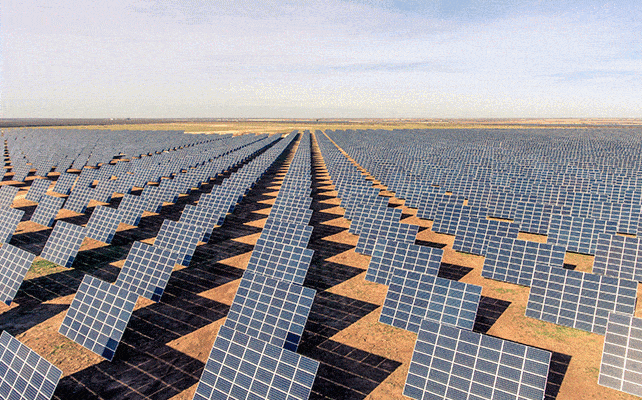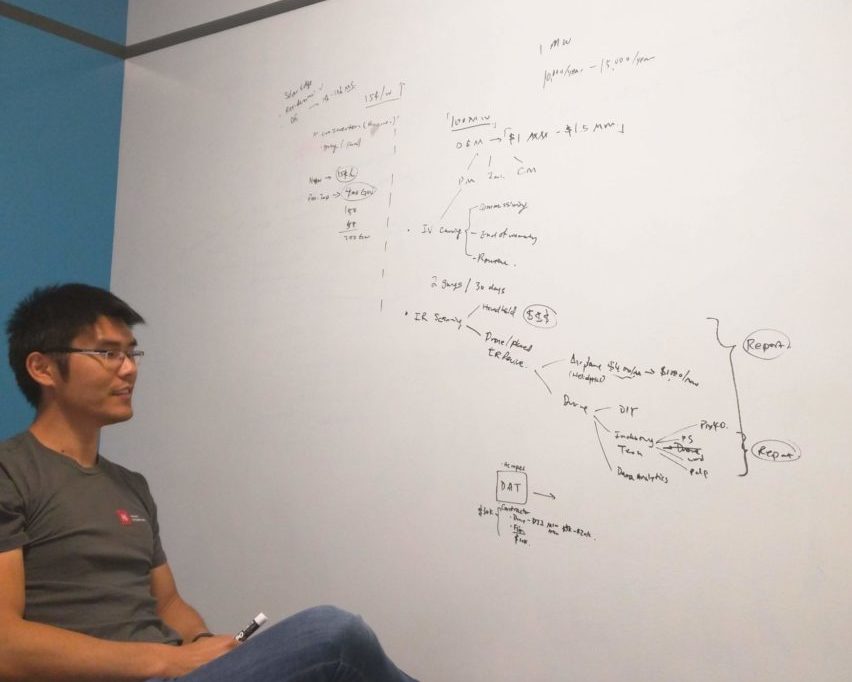If the solar power industry is going to be able to sell electricity at 1.5¢/kWh, then we’re going to have to get better at a lot of things. Operations and maintenance (O&M), over the course of multiple decades, is going to be one of those things.
For instance, two human beings spending 30 days, doing handheld IR analysis, spot checks and IV curves on a 100 MW plant just doesn’t make sense. However – doing the same site in 24 hours, and discovering up to 3,500 anomalies in 423,000 solar panels, as occured in a recent case study, makes a whole lot of sense.
Aerospec Technologies sells ‘actionable aerial insights’ based on thermal scans that are then fed into a cloud based, machine learning platform to deliver feedback on a solar module level. And sitting down with their founder, Lance Li, as he scribbled various O&M process it became pretty clear what the company offers – a better way of doing things, at a much better price.
That usually wins the game.

The drones commonly used, Aerospec referenced the M100 and M200, can cost between $5,000-20,000. Then you add a Flir infrared camera that starts at $5,000.
Historically, per Lance, using an airplane to do the thermal imaging cost greater than $1,000/MW. In recent times, he’s seen these services fall 60% to $400/MW, before data analysis, mainly due to competition from drone contractors at $50-75/hour. A talented operator that maps a location efficiently can cover a MW of solar in less than ten minutes – see unique zone maps below – before the battery might need be replaced. A drone Aerospec recently sent to a customer can fly for up to 38 minutes.

After the drone does its scan, the operator loads the data to Aerospec’s portal, and the magic begins. A machine learning educated algorithm then gets to work and, roughly for each MW of solar power uploaded, Aerospec will provide its customers with solar module-level data within 50 minutes.
The feedback comes in two formats – a Google Maps-like interface (below) that lets you float about the site and click individual modules, as well a .pdf deliverable in a CEO-friendly format.

The above image shows the type of information shown – cracked panels, diode damage, shading and more. And the reason a computer can tell you specifically what is wrong with your solar panel is because every type of damage gives off a unique signature. These unique signatures have been taught to Aerospec’s computers, through a combination of hundreds of thousands of solar panels being scanned, and human feedback.
Lance says their accuracy rate identifying the specific issue is approximately 97%.
And the meat and potatoes is this: Aerospec is ready to offer its data analysis services for a 1 MW site starting at $300/year for quarterly reports, aligning with an arising trend of constant data required by investor-owned utility scale solar power projects.

In the three years that Aerospec has been working, it hasn’t necessarily been easy.
I tried building drones and selling them, I tried selling drones as a middleman, and I tried providing drones as a service.
Aerospec isn’t a ‘drone’ company anymore – they’re a data analytics group with over 1.5 GW of solar projects under their belt, and growing quickly.
The company’s ‘Predictive Intelligence’, integrated into the owner’s project management software, means that when the wheels roll, instead of just sending a human and a drone, they’ll also send a pallet full of panels ready to replace – because historical data suggests a certain amount of damage – and because while the worker is scanning the second half of the site, Aerospec has already analyzed and returned a report on the first half of the site.
All owners want to reduce truck rolls.
With over 400 GW of solar power projects already installed globally, and only a slightly sliver of utility scale projects having solar module level electronics to compete with Aerospec, Lance has learned an important lesson.
They don’t like us for our drones, they don’t like us for our AI – they love us for the intuitive, user friendly solution.
This content is protected by copyright and may not be reused. If you want to cooperate with us and would like to reuse some of our content, please contact: editors@pv-magazine.com.








By submitting this form you agree to pv magazine using your data for the purposes of publishing your comment.
Your personal data will only be disclosed or otherwise transmitted to third parties for the purposes of spam filtering or if this is necessary for technical maintenance of the website. Any other transfer to third parties will not take place unless this is justified on the basis of applicable data protection regulations or if pv magazine is legally obliged to do so.
You may revoke this consent at any time with effect for the future, in which case your personal data will be deleted immediately. Otherwise, your data will be deleted if pv magazine has processed your request or the purpose of data storage is fulfilled.
Further information on data privacy can be found in our Data Protection Policy.